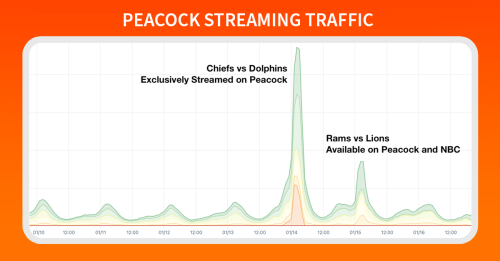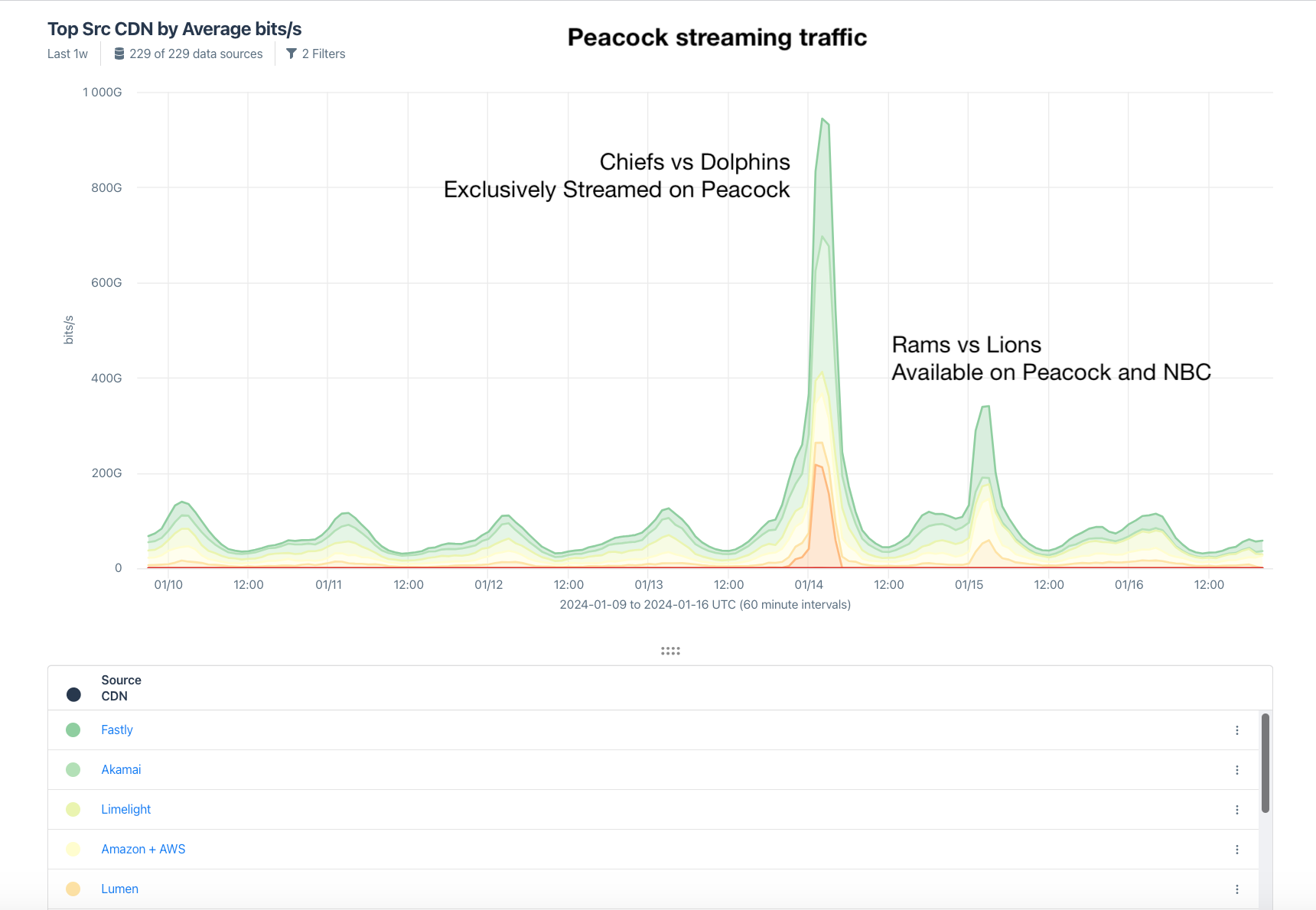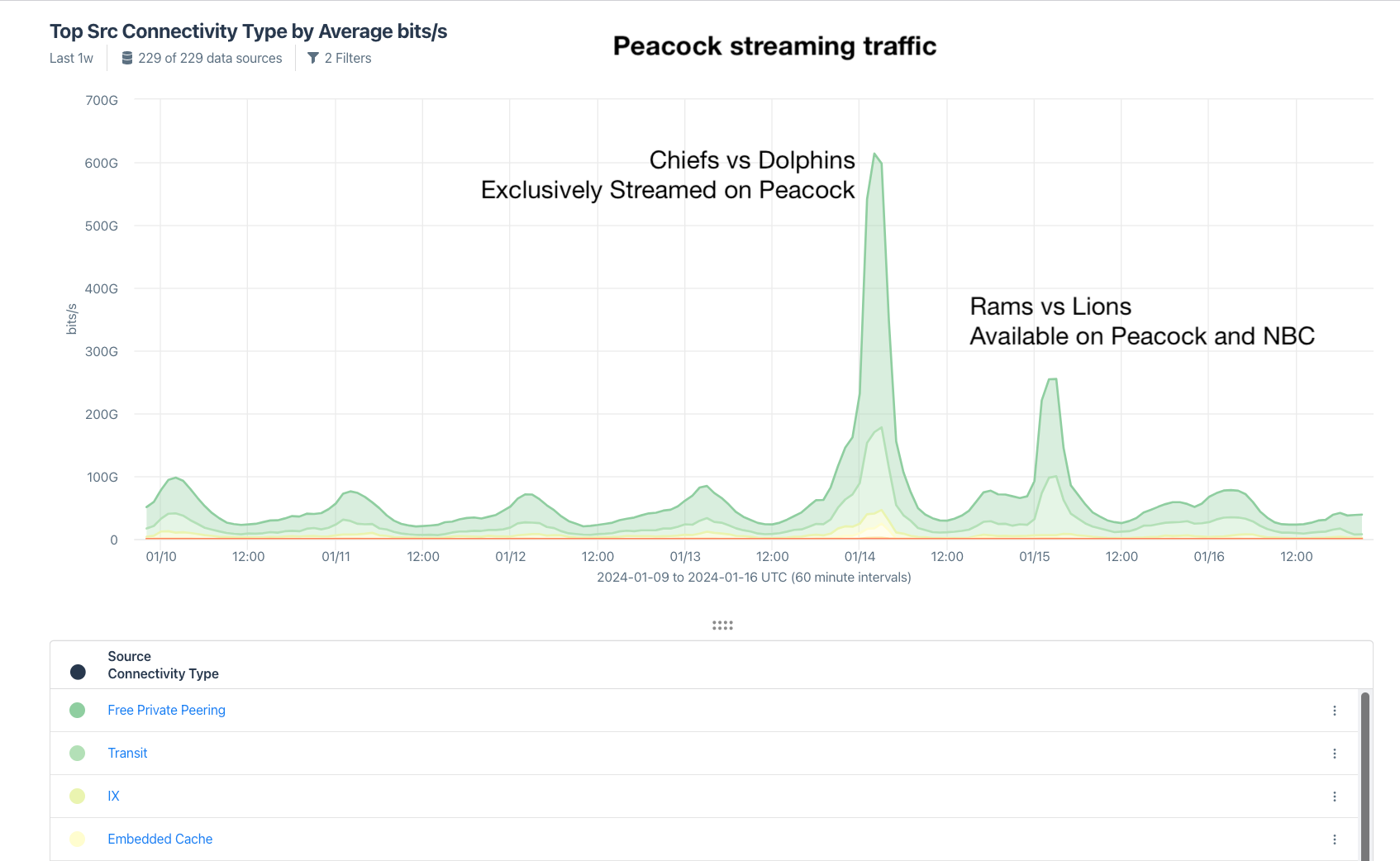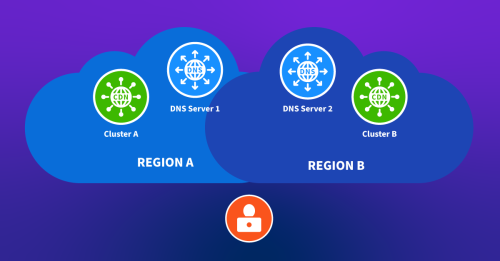Anatomy of an OTT Traffic Surge: Peacock Delivers First Exclusively Streamed NFL Playoff Game


Summary
NFL playoffs are here, and Doug Madory tells us how Saturday’s first-ever exclusively live-streamed NFL playoff game was delivered without making any references to pop superstar Taylor Swift or her sizzling romance with nine-time Pro Bowler Travis Kelce.
On Saturday night, NBC’s Peacock streaming service aired the first-ever exclusively live-streamed NFL playoff game. Football fans needed an account with the OTT service to watch the Kansas City Chiefs defeat the Miami Dolphins in arctic conditions. The result was the most-streamed NFL game ever and an OTT traffic surge. In this post, we’ll take a look at how that traffic was delivered during the game.
OTT Service Tracking
Kentik’s OTT Service Tracking (part of Kentik Service Provider Analytics) combines DNS queries with NetFlow to allow a user to understand exactly how OTT services are being delivered — an invaluable capability when trying to determine what is responsible for the latest traffic surge. Whether it is a Call of Duty update or a Microsoft Patch Tuesday, these OTT traffic events can put a lot of load on a network and understanding them is necessary to keep a network operating at an optimal level.
The capability is more than simple NetFlow analysis. Knowing the source and destination IPs of the NetFlow of a traffic surge isn’t enough to decompose a networking incident into the specific OTT services, ports, and CDNs involved. DNS query data is necessary to associate NetFlow traffic statistics with specific OTT services in order to answer questions such as, “What specific OTT service is causing my peering link with a certain CDN to become saturated?”
Kentik True Origin is the engine that powers OTT Service Tracking workflow. True Origin detects and analyzes the DNA of over 540 categorized OTT services and providers and more than 50 CDNs in real time, all without the need to deploy DPI (deep packet inspection) appliances behind every port at the edge of the network.
Peacock exclusive wild card
Peacock reportedly paid $110 million for the exclusive rights to air the Kansas City Chiefs’ win over the Miami Dolphins in frigid temperatures on Saturday night. It’s an expensive ploy by the OTT service to bring in new subscribers without alienating NFL fans used to watching the NFL over broadcast television.
The screenshot below from Kentik’s Data Explorer shows Peacock traffic experiencing a meteoric rise as millions of football fans get on the OTT service to watch the game. On Monday, NBC asserted that the game in Kansas City was the most streamed NFL game in history. By our stats, it is also likely also the most streamed thing in Peacock’s history.

Based on our customer OTT data, the game was delivered via a variety of content providers including Akamai (30.8%), Fastly (25.7%), Edgecast Verizon (18.7%), Amazon/AWS (11.9%) and Edgio and Lumen both delivering around 6%.
The graphic below shows how Peacock was delivered during this one-week period. By breaking down the traffic by Source Connectivity Type (below), we can see that the wildcard games were delivered by a variety of sources including private peering, IXP, embedded cache, and transit. For this week in January, the content viewers were consuming overwhelmingly came via private peering (63.1%), but also via transit (28.1%) and IXP (7.6%). For Peacock, embedded caching (1%) barely registered.

It is normal for CDNs with a last mile cache embedding program to heavily favor this mode of delivery over other connectivity types as it allows:
- The ISP to save transit costs
- The subscribers to get demonstrably better last-mile performance
In addition to source CDN and connectivity type, users of Kentik’s OTT Service Tracking are also able to break down traffic volumes by subscribers, specific router interfaces, and customer locations.
How does OTT Service Tracking help?
Previously, my colleague Greg Villain described enhancements to our OTT Service Tracking workflow which allows providers to plan and execute what matters to their subscribers, including:
- Maintaining competitive costs
- Anticipating and fixing subscriber OTT service performance issues
- Delivering sufficient inbound capacity to ensure resilience
Major traffic events like the release of a blockbuster movie on streaming can have impacts in all three areas. OTT Service Tracking is the key to understanding and responding when they occur. Learn more about the application of Kentik for subscriber intelligence.
Ready to improve over-the-top service tracking for your own networks? Get a personalized demo.


